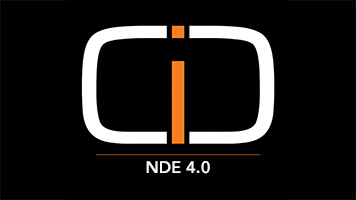Revolutionizing Inspection Techniques in Aerospace and Wind Energy with NDE 4.0
In the evolving sectors of aerospace and wind energy, the adoption of Non-Destructive Evaluation (NDE) 4.0 principles marks change. Additionally, these advancements are transforming manufacturing and maintenance practices. Jeremy Heinks, CEO and owner of CICNDT, champions the adoption of these advanced techniques. He states, “NDE 4.0 is not just transforming our methods—it’s fundamentally enhancing the safety and efficiency of our operations.”
The Emergence of NDE 4.0 in High-Stakes Industries
NDE 4.0 is more than a technological upgrade; it represents a paradigm shift in how inspections are conducted in industries where precision and reliability are crucial. Here’s how NDE 4.0 technologies are making a significant impact:
Artificial Intelligence (AI) and Machine Learning: AI excels in detecting complex patterns and anomalies in composite materials, which are extensively used in both aerospace and wind turbines. These technologies learn from vast amounts of data, continually improving in accuracy and reliability.
Cloud Computing and Big Data: These platforms manage the extensive data generated during inspections, enabling deeper analysis, trend monitoring, and predictive maintenance, which are critical for the longevity and reliability of equipment in these sectors.
Digital Twins: These virtual replicas simulate the real-time behavior of physical assets under various conditions. For aerospace components and wind turbines, digital twins are invaluable for predictive maintenance and operational planning.
Augmented Reality (AR) and Virtual Reality (VR): AR and VR technologies provide immersive and interactive methods for conducting inspections. These tools allow technicians to visualize internal structures and defects in detail, improving the accuracy and efficiency of inspections.
Advantages of NDE 4.0 in Aerospace and Wind Energy
NDE 4.0 technologies not only enhance inspection capabilities but also fundamentally alter interactions between inspectors and equipment. Consequently, robotics and automated systems are crucial, enabling safe, efficient inspections of hard-to-reach areas in aicraft and turbines.
Leadership in Innovation and Overcoming Challenges
Transitioning to NDE 4.0 involves overcoming significant challenges. For example, the integration of diverse data sources and the management of complex systems. Training staff to adapt to these new technologies is also crucial. Heinks emphasizes the importance of leadership in this transformative phase, stating, “Effective integration of NDE 4.0 requires a proactive leadership approach, one that fosters a culture of continuous learning and technological adaptability.”
The Future of NDE 4.0 in Inspection Practices
As NDE 4.0 technologies continue to mature, their integration into manufacturing and maintenance processes is expected to set new standards in quality assurance across industries. This shift not only promises to improve the structural integrity and operational efficiency of aerospace components and wind turbines but also aligns with sustainable manufacturing practices.
Jeremy Heinks is optimistic about the future: “With NDE 4.0, we are not just keeping up with technological advancements; we are leading the charge towards more sustainable, efficient, and safer manufacturing processes in the aerospace and wind energy sectors.”
This embrace of NDE 4.0 by leaders like Heinks is setting a new benchmark for the industry, driving it toward a future where digital technology and traditional manufacturing processes converge to create a new era of industrial innovation and safety.


